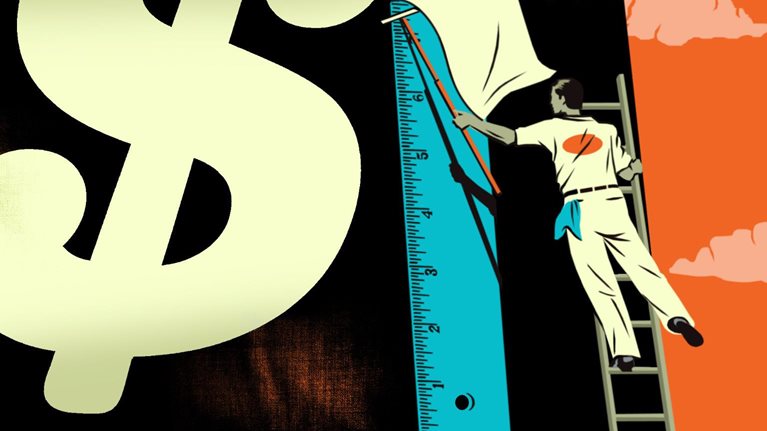Starting under the radar
Our initial goals for social media were to raise brand awareness, increase customer loyalty, improve employee engagement, develop customer insights, and control news flow. It was the “softer” side of things. At first, we didn’t expect to sell shipping containers through social, though we’re learning now that in fact we can. Our social program was small and rooted in the communications department. We didn’t need much of a budget, because I did most of the work myself, which also allowed me to work with minimal oversight.
I wasn’t sure exactly how we’d be able to engage with people when I started, but in my first week I found our digital archive, which no one was using. It had 14,000 photos on file—mainly ships, seascapes, ports, et cetera. I knew I could share them and add stories to them. That rich history was something I could share that was unique to Maersk, and people really responded to it. Now people who don’t even know who we are take and post photos of Maersk ships.
Many other big companies are much more top-down in their approach. They build up a business case, get it signed off by management, outsource the actual work to agencies, plan their posts weeks ahead, and get them approved by legal, et cetera. That’s a recipe for a slow death. We did the opposite. Management trusted me to handle social media. We’ve taken a more explorative approach and focused on getting the culture and the organization onboard.
That’s also how we got such a broad presence in social media across more than ten platforms. We have more than 800,000 fans on Facebook, 40,000 Twitter followers, and 22,000 Instagram followers. In one-and-a-half years, we’ve spent less than $100,000 on external resources. That low an investment—we’re a company with $27 billion in revenue—has allowed us to stay under the radar, explore the landscape, and use social media in the way it was intended: to communicate with people.
Finding an audience
Part of our audience is, of course, Maersk employees, but over time we’ve seen significant growth in people from the broader maritime industry. What I’ve been pleasantly surprised by is the size and engagement of the maritime community. People in the maritime industry see the benefit of social—they spend a lot of time at sea and they want to be connected. So they follow us because we’re so active in social.
Also, in a recent survey, 15 to 20 percent of our Facebook fans told us they are customers. Even though social selling is also a part of the scope, we need to remember that sales should be about more than just selling things. Sales should be about understanding customers, interacting with them, helping them. Social is an important tool for us to do those things and, ultimately, help in the sales cycle.
Defining impact broadly
We didn’t put monetary goals against social media at first, because that would dampen our focus on long-term value creation and limit our learning. But we did do a survey in the last quarter of 2012 asking customers—even those not following us on social media—how they perceived us. About 68 percent said our social-media efforts had improved their perceptions of Maersk Line. For me, that’s a true sign of the beneficial impact of being open, engaged, and transparent.
We have looked at the cost of Twitter relative to what costs there would otherwise be for media relations, for example, and we’ve seen that our social media gives us some serious media exposure. It’s been noted that today we have the most influential online presence in the industry, even surpassing the media outlets.
In a few cases, social media has helped us drive down significant opportunity costs. For example, when the Emma Maersk was in the Suez Canal during the Egyptian riots, there were rumors on the Internet that the Suez was blocked and the Emma Maersk was sinking. We called local operations and learned that, yes, the ship was damaged, but it was safely berthed in a local port. We tweeted the information and ended the rumors and rising panic. Without social, we would have spent so much management time trying to figure out a response and reach out to clients to reassure them.
We’ve set up metrics to navigate our progress, but not as goals to achieve. For example, regarding employer branding, the plan is that every time we bring in a new hire, we ask him or her how big a part social played in the choice to work for us. That will give us metrics to gauge our efforts—even five years from now.
Balancing oversight with scaling
Our social-media growth has mostly been organic. As I’ve discovered local Maersk Line Twitter or Facebook accounts, I’ve reached out to give them access to post to our global Facebook page, but in a way that their content alone is visible locally. It’s important for us to have a consistent voice and presence, but also to make it simple for people to know which account to follow. I recently had to intervene with Maersk India to redirect their social-media activity so that they would post on our global pages. There was some grumbling, but then they realized they could get many more fans through the global platform.
An added benefit is that with this single platform for publishing, we have a constant source of content—photos, updates, news items, et cetera. The content comes from our people, not from management. At the same time, we’ve agreed that it’s fine to open local Twitter accounts as long as they add business value. We don’t want these local accounts just tweeting the same stories we’re already publishing. And it makes sense to use the local language if that’s the natural thing to do.


